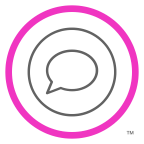Parents often wonder if their child’s communication development is on track. There’s such a wide range of what’s considered appropriate early on in language development, so it can be challenging for a parent to identify if their child is a late talker or maybe needs some direct speech therapy support to help language skills grow.
What is language?
Language refers to the symbol system we use to communicate on a daily basis—without really thinking about it, we know that 'ball' refers to those spherical things we can throw and bounce, and that putting an '-ed' at the end of regular verb means something already happened. We take our understanding of these symbols and rules pretty much for granted, but it’s something that we had to learn early on in life.
Receptive Language
Receptive Language broadly refers to the ability to understand the things that are said to a listener. It’s important to know that a receptive language disorder does not mean there’s anything impaired with a child’s ability to think, it simply means that those rules and symbols may feel a bit like hieroglyphics—they haven’t cracked the code and so they’re not quite sure how what they’re hearing maps on to what they know.
Expressive Language
Expressive language, on the other hand, refers to the ability of the speaker to access and manipulate all of these symbols and rules to be able to express wants, needs, or ideas. If expressive language difficulty is very impaired, speakers can have a hard time combining multiple words into sentences. It can also be more subtle, and speakers could struggle with thinking of the word they want to say, or occasionally use incorrect grammatical endings in sentences.
Phonology
Phonology refers to the sound system of our languages. For example, in English, the words 'lid' and 'lip' are two different words with different meanings because they end in two different phonemes.
Morphology
Morphology refers to those grammatical markers we put on words, like possessive -s, plural -s, regular past tense -ed and so forth.
Syntax
Syntax is sometimes equated with grammar, but more broadly refers to the structure of sentences. All sentences have a syntactic structure that includes things like nouns, verbs, objects, prepositions, and so forth.
Semantics
Semantics refers to the meaning of words. We know words that have very concrete things they refer to, like 'chair.' But we also have more abstract concepts we talk about—things like 'love,' 'friendship,' and 'independence.'
Pragmatics
Pragmatics, or social language, refers to the ability to use all of these subcategories of language in social, functional exchanges.
How is a Language Disorder Diagnosed?
A speech-language pathologist uses a combination of informal observations combined with standardized testing, when appropriate, to determine if a child’s skills fall within the normal range of development, or may require therapy.
Developmental Milestones
First 12 months: In those first years of life, we want to see constant improvement. Many kids begin to demonstrate their first attempts at language with babbling.
Age 1-2: First words typically start emerging around a baby’s first birthday, although there’s a very wide range in vocabulary development.
Age 2-3: A baby’s second birthday is when we start to listen for early sentences.
Age 3-4: From age 3 to 4, we want to see kids continue to produce longer sentences.
Conclusion
If your child is 4 or older and is hard to understand, or seems to have a hard time expressing themselves, it may be time to consult a speech-language pathologist for an evaluation.
